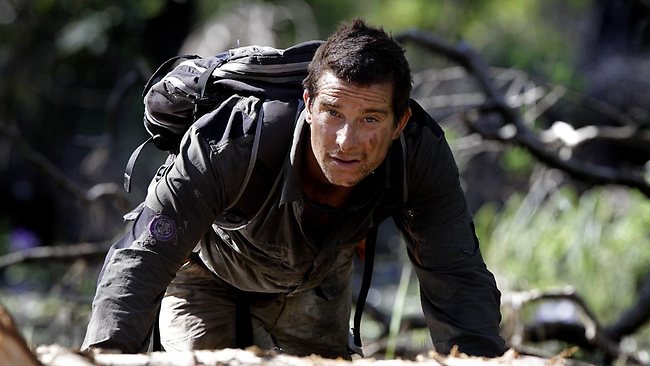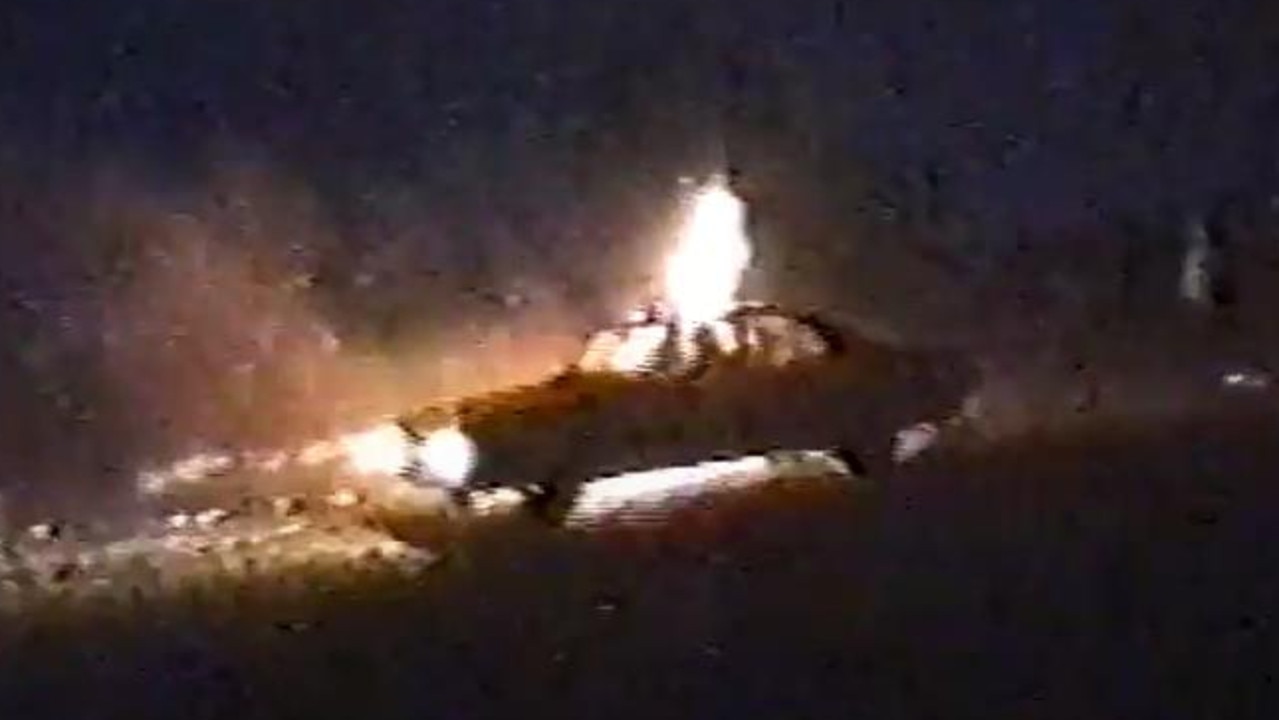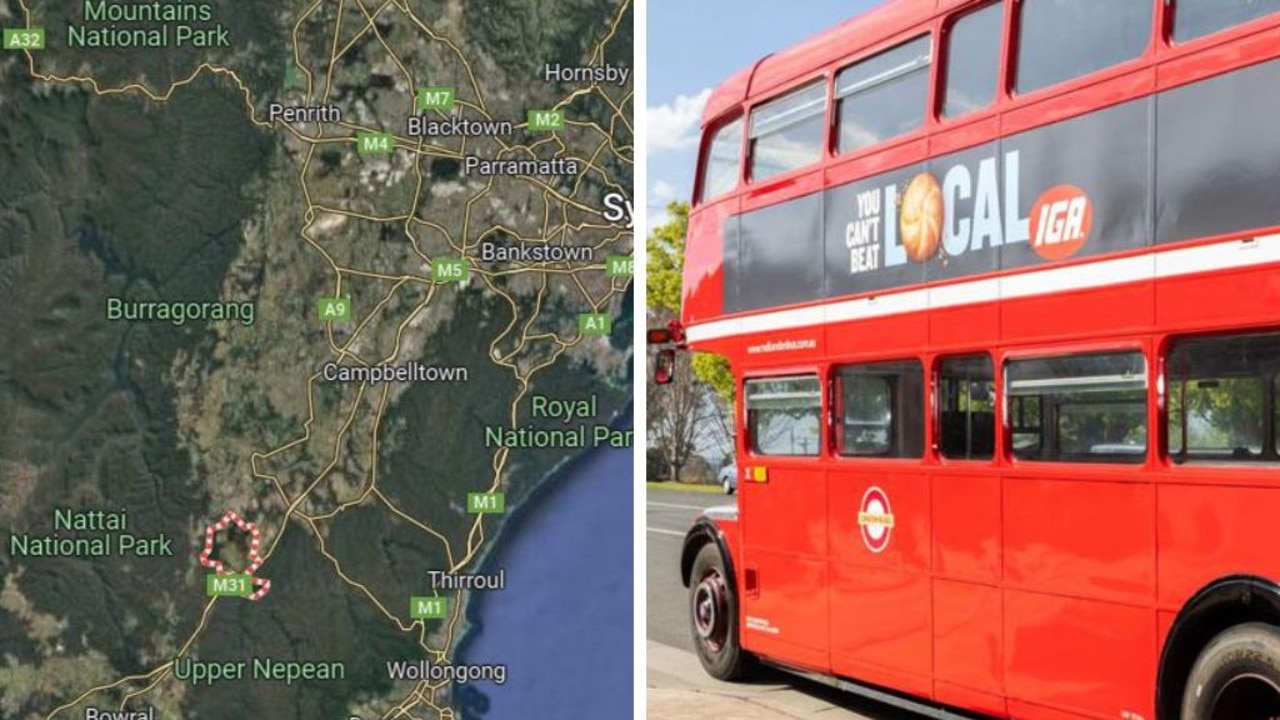Bush Survival Course with High N Wild
WILL drinking your urine really save you? Australia's answer to the reality survival star tells us what you don't see on TV.

I'VE secretly always wanted to drink my own urine.
It’s not some irresistible urge that attacks me every time I go to the bathroom, it’s more my inner survival fantasist.
You know, those daydreams where you’re trapped in a doomed scenario - a leg stuck under a rock, an arm on fire and a polar bear sitting on your head - which no ordinary person could possibly survive.
Forget Bear Grylls. I would do the impossible. I would do what no one else could do. I would drink my own urine. And survive.
Or that’s the daydream. The reality is… I didn’t actually know whether downing the self-produced yellow nectar would help or hinder a survival situation.
In fact, when it came to survival skills - despite the love of a good hike - turns out I didn’t know very much at all.
It was finally time to learn some real bush skills in case I ever got topographically confused in the Outback or survived a plane crash, a la Lost.
I wanted to know how to find water, how to build a shelter and how to light a fire when my lighter runs out.
Survival of the fittest
I rocked up to Katoomba, in the Blue Mountains of New South Wales, for High N Wild's two-day Bush Survival Skills Course.
Lee, our Bear Grylls for the weekend, displayed an astonishing knowledge of both the bush and Aboriginal culture.
After an hour’s drive into the canyons and hazy tree blankets of the atmospheric World Heritage-listed canyons, we began our walk into the wilds.
As we strolled, Lee explain how different plants could be used for all sorts of impressively helpful things; antiseptic, making rope and string, for carrying fire wood, making glue and even soap.
The last one thrilled me the most. Not so much because I’m a soap-dodger, more because I had always thought white foam in woodland streams meant pollution. But it’s eucalyptus oils being drawn from the leaves and they make a perfectly good hand-cleansing agent.
Lee pointed out good spots for shelters and explained different techniques for building them.
They can be as simple as a body-sized gap in a tree and your backpack for a door.
Effective cover from the elements is more important than finding water, as you can survive around three days without the wet stuff, but only about 30 hours without shelter in some conditions.
We eventually erected shelters under an overhanging cliff near some Aboriginal handprints.
It was getting nippy so we needed to build a fire - but no lighters or matches were allowed. Bugger.
Lee showed us a technique involving a knife, magnesium, flint and carefully selected kindling. This particular technique requires impossible amounts of patience and after about 20 minutes I’d learnt that you really can have smoke without fire.
Sam on the other hand hit gold, or rather, orange.
It was all about the preparation, but I had been too eager to get going.
Camp cooking
Sitting around the campfire we cooked potatoes and sausages on sticks and discussed survival scenarios and skills.
We learned how to preserve meat, how to survive a snake bite, a forest fire (jump in the river, or a wombat hole), how to use a sleeping mat as a splint for a broken limb, how to survive a lightening storm (sit on your backpack in a field, away from trees) and how to purify water.
The next morning we had a go at another old-school fire-starting technique - with sticks.
Certain types of wood are especially effective. They have to be super dry and rubbed furiously.
The fast action creates hot wood dust, which should create a spark. But it takes time and the sort of patience alien to our instantaneous contemporary world.
It was seriously hard work and though I never actually got a flame, I could at least see how it would work.
The course also included caving and canyoning - and although it sounds so very cheesy - I came away from the weekend with a new sense of comfort and appreciation for nature.
So much of it can help us when things go a bit pear-shaped.
But more importantly, should you ever drink your own (or someone else’s) urine like in 127 Hours?
Sadly, it’s a bit like the “punch a shark on the nose” theory: it probably won’t help, but you may as well.
Ingested urine will most likely do some serious damage to your liver, as it contains all the bits your body has rejected. Urinating is chucking out the garbage.
So you should only drink urine if you’re in an hour or two from death.
It may just make your slide down the tunnel that tiny bit more comfortable. But it sure as heck ain’t gonna save you.
All a bit disappointing really.
High N Wild's two-day Bush Survival Skills Courses cost $349.
SURVIVAL SHORTLIST
1. You can usually find water by seeing where small birds fly to at dawn and dusk (they often zigzag from tree to tree on the way back, because they’re full up). Bees and flies always exist near the wet stuff and animal tracks will lead you there. Water is often found at the bottom of valleys.
2. Even if your mobile phone has no reception, you can usually still call 000 (or 999 or 911, which automatically re-direct you to the emergency services).
3. If you’re using your fire to attract attention, you want it smokey in the day and big flames at night.
4. Lost? There are ways to find north form the stars, but you’re probably not going to be walking far at night anyway. The best way is to simply note where the sun comes up (east) and keep an eye on it.
5. A survivor’s psychology can be crucial. Panicking quickly uses up vital fluids and energy and a positive attitude can work wonders.



